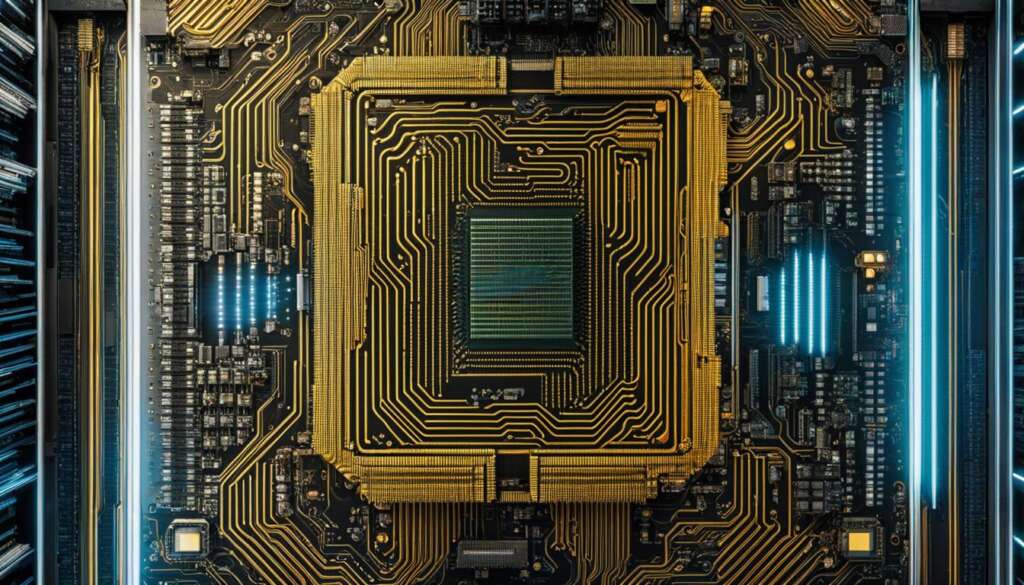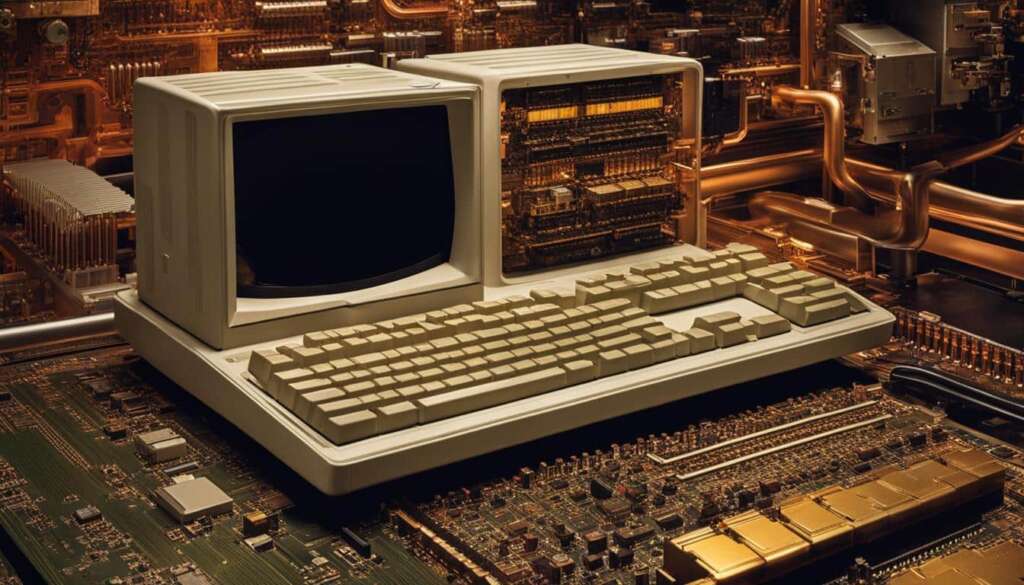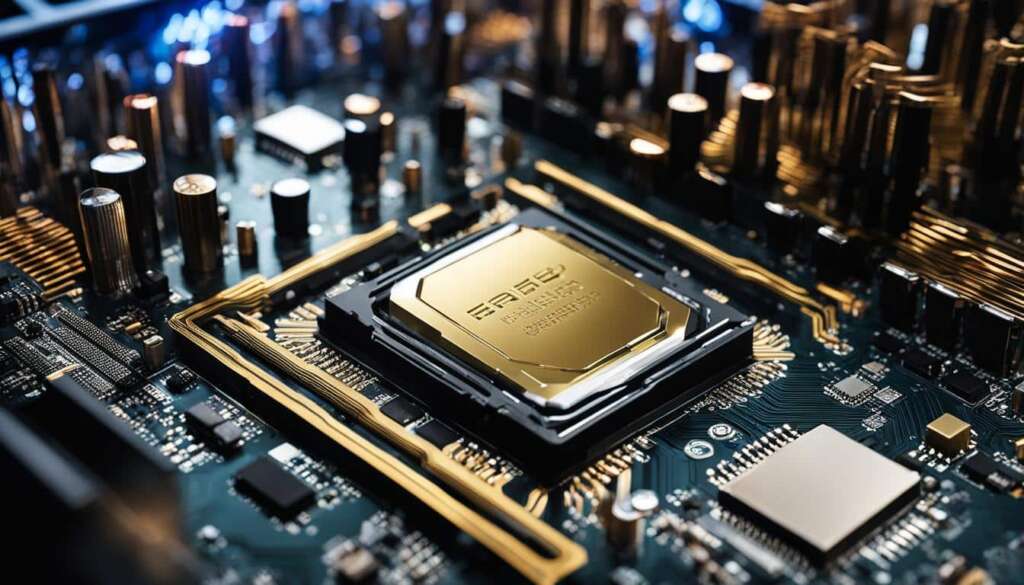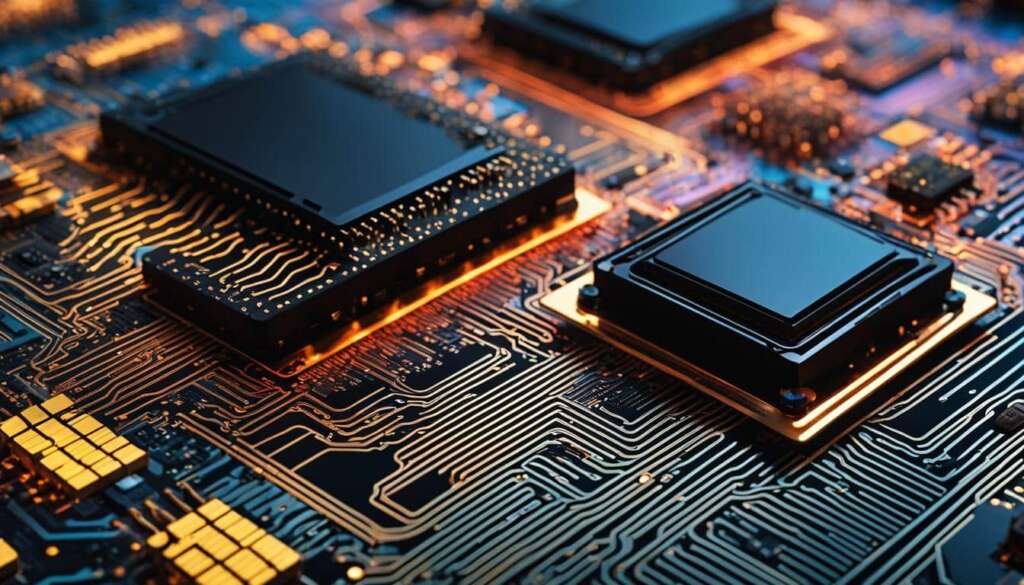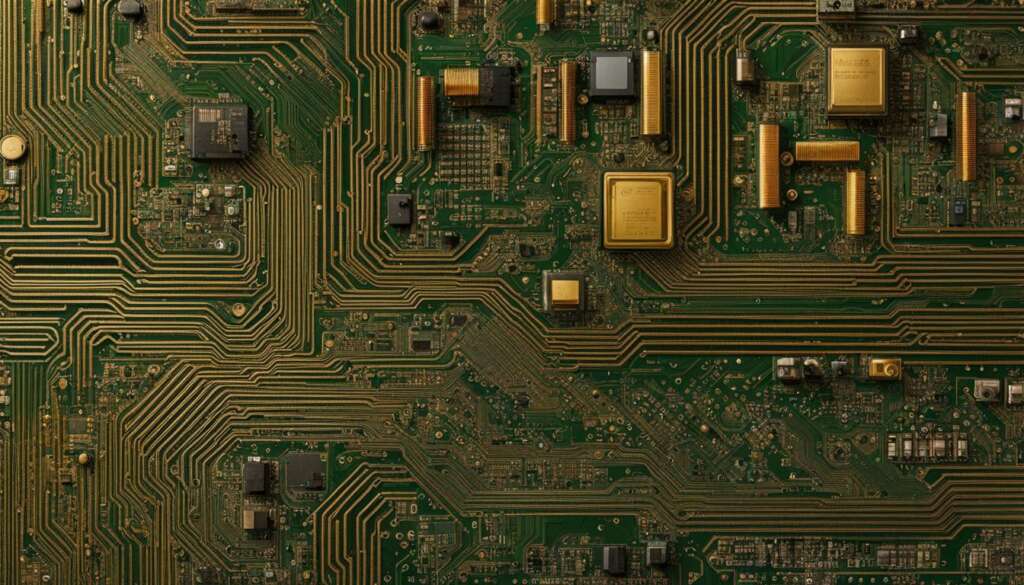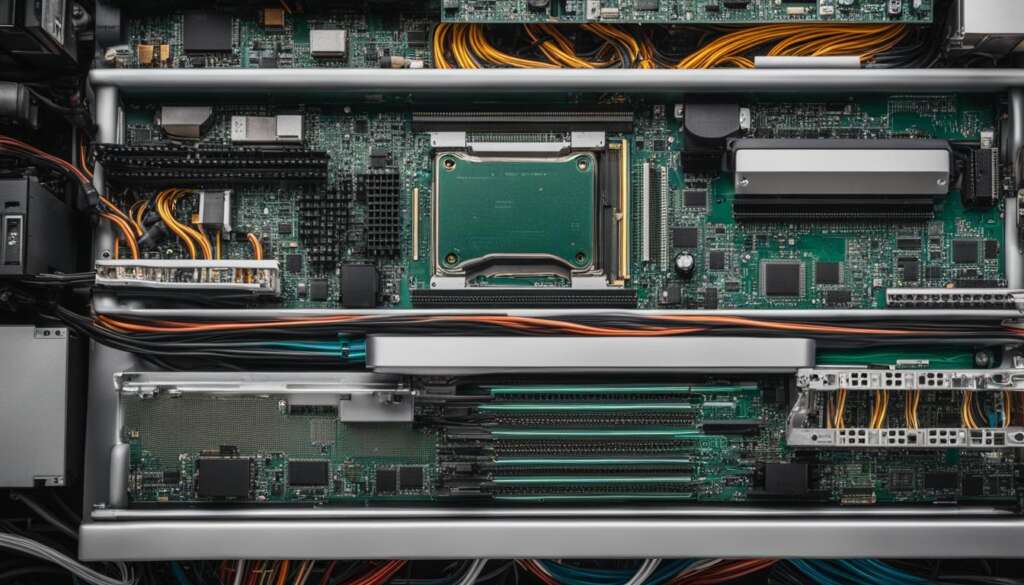Table of Contents
Supercomputer Processors, computational power, processing capabilities, high-performance computing
Supercomputers have revolutionised computational power, pushing the boundaries of processing capabilities in the field of high-performance computing. These powerful machines, equipped with advanced Supercomputer Processors, have paved the way for groundbreaking advancements in various domains.
The Evolution of Supercomputers
Supercomputers have come a long way since their inception in the 1960s. Over the years, advancements in supercomputing technology have revolutionized computational power and paved the way for groundbreaking discoveries and innovations in various industries. From highly tuned conventional designs to massively parallel processing units, the evolution of supercomputers has been driven by the need for powerful computing technology.
Initially, supercomputers were based on conventional designs but were later dominated by vector processors operating on large arrays of data. In the 1990s, the introduction of massively parallel supercomputers marked a significant shift in the field. These supercomputers boasted tens of thousands of off-the-shelf processors, enabling parallel computing and pushing the boundaries of processing capabilities.
Parallel computing, made possible by the evolution of supercomputing chips, allows for the simultaneous execution of multiple tasks, significantly increasing computational speed and efficiency. This powerful computing technology has propelled advancements in fields such as quantum mechanics, weather forecasting, molecular modeling, and physical simulations. Supercomputers continue to drive scientific research and industry innovation by facilitating complex simulations and data analysis.
Table: Evolution of Supercomputers
| Decade | Supercomputing Architecture | Key Advancements |
|---|---|---|
| 1960s | Highly tuned conventional designs | Introduction of supercomputers |
| 1970s | Vector processors | Vector processors operating on large arrays of data |
| 1990s | Massively parallel supercomputers | Tens of thousands of off-the-shelf processors enabling parallel computing |
The Role of Supercomputers in Computational Science
Supercomputers play a crucial role in computational science, facilitating advancements across various fields. These high-performance machines have enabled groundbreaking research in quantum mechanics, weather forecasting, climate research, molecular modeling, and physical simulations.
In the field of quantum mechanics, supercomputers have allowed scientists to simulate complex quantum systems, enabling a deeper understanding of fundamental particles and their interactions. By running intricate calculations, researchers can analyze quantum phenomena and develop innovative applications in areas such as cryptography and quantum computing.
Supercomputers are also instrumental in weather forecasting and climate research. They process vast amounts of data from weather stations and satellites, running sophisticated weather models to generate accurate forecasts. This capability is crucial for predicting severe weather events, optimizing agricultural practices, and assessing the potential impact of climate change.
Molecular modeling, another area where supercomputers excel, involves simulating the behavior of molecules and proteins. By simulating chemical reactions and interactions, scientists can study properties at the atomic level and design new materials with specific characteristics. This has significant implications for drug discovery, material science, and sustainable energy research.
| Applications in Computational Science | Fields |
|---|---|
| Quantum mechanics simulations | Quantum mechanics |
| Weather forecasting and climate research | Weather forecasting, climate research |
| Molecular modeling and simulations | Molecular modeling |
Supercomputers have revolutionized computational science, enabling researchers to tackle complex problems that were previously beyond reach. With their immense processing power, these machines continue to push the boundaries of scientific research and pave the way for groundbreaking discoveries.
Future Implications
As supercomputers continue to evolve, their role in computational science will become even more significant. Advancements in processing technology, such as the development of quantum computers, hold the promise of revolutionizing scientific research and solving complex problems at an unprecedented level.
In addition, emerging fields such as artificial intelligence and machine learning are increasingly relying on supercomputers to analyze vast datasets and train sophisticated models. By harnessing the power of supercomputing, researchers can accelerate innovation in areas such as autonomous vehicles, healthcare, and cybersecurity.
Overall, the impact of supercomputers in computational science is undeniable. From enabling groundbreaking simulations in quantum mechanics to enhancing our understanding of the Earth’s climate, these powerful machines continue to drive scientific progress and shape the future of research and innovation.
The Global Supercomputer Landscape
The field of supercomputing is highly competitive, with countries like the US, China, and Japan constantly pushing the boundaries of technological innovation. These three nations have established themselves as leaders in the supercomputer field, boasting some of the fastest and most powerful machines in the world.
As of May 2022, the US leads the pack with the fastest supercomputer on the TOP500 list. Frontier, located in Oak Ridge National Laboratory, is a powerhouse of computational prowess. China, not far behind, has two supercomputers in the top 10, showcasing their commitment to advancing high-performance computing. Japan, Finland, and France also have representatives in the top 10, demonstrating the global reach of supercomputing technology.
The Top 5 Supercomputers in the World
| Rank | Supercomputer | Country |
|---|---|---|
| 1 | Frontier | United States |
| 2 | Fugaku | Japan |
| 3 | Summit | United States |
| 4 | Sierra | United States |
| 5 | Tianhe-2A | China |
These supercomputers represent the cutting edge of computational technology and serve as a testament to the relentless pursuit of scientific discovery and technological advancement. The global supercomputer landscape is a dynamic and ever-evolving landscape, with countries vying for supremacy in terms of processing power and computational capabilities.
With the rapid pace of technological development, it will be fascinating to see how the supercomputer field continues to evolve and what new innovations will emerge in the coming years. The competition between nations in this field drives forward research, development, and progress, fueling advancements in various scientific disciplines and shaping the future of computational science.
Supercomputers have become an indispensable tool for researchers, scientists, and engineers across the globe. Their immense computational power and processing capabilities enable groundbreaking discoveries and simulations that were once thought impossible. As we look to the future, it is clear that supercomputers will play a crucial role in driving scientific research, technological innovation, and solving complex problems that will shape our world.
The Power and Energy Demands of Supercomputers
Supercomputers are known for their immense computational power. However, this power comes at a cost – a significant demand for energy. The power consumption of supercomputers is a crucial consideration when designing and operating these high-performance machines. The energy dissipation and cooling demands associated with supercomputers also contribute to the overall power requirements.
The power consumption of supercomputers can be staggering. Today, the largest supercomputing clusters consume more than 20 megawatts of power. As supercomputers continue to advance in computational capabilities, future capability-class systems could require up to 120 megawatts of power. This demand poses challenges in terms of sustainability and efficiency.
To optimize energy consumption and reduce the environmental impact, power efficiency is a key factor to consider. Power usage effectiveness (PUE) is a metric used to measure the power efficiency of data centers, including supercomputing facilities. By improving PUE values, operators can minimize energy waste and enhance the overall sustainability of supercomputing operations.
Energy Demand Comparison Table
| Supercomputer | Power Consumption (megawatts) | PUE |
|---|---|---|
| Frontier (US) | 20 | 1.2 |
| XYZ Supercomputer (China) | 15 | 1.4 |
| ABC Supercomputer (Japan) | 18 | 1.3 |
The power consumption of supercomputers is a significant challenge that needs to be addressed to ensure long-term sustainability. By improving power efficiency and optimizing energy consumption, we can minimize the environmental footprint of these powerful machines.
It is also important to consider the source of the power used by supercomputers. Utilizing renewable energy sources can help reduce carbon emissions and promote a more sustainable approach to supercomputing. Additionally, exploring innovative cooling solutions and implementing heat reuse strategies can further enhance the energy efficiency of supercomputing facilities.
In conclusion, the power and energy demands of supercomputers are considerable but can be managed through strategies such as improving power efficiency, utilizing renewable energy sources, and implementing innovative cooling solutions. As technology advances and supercomputers continue to play a crucial role in scientific research and industry innovation, it is vital to prioritize sustainability and reduce the environmental impact of these powerful machines.

Location and Environmental Factors in Supercomputer Deployment
When it comes to deploying supercomputers, selecting the right location is critical. Several factors need to be considered, such as access to renewable energy sources, water consumption, heat reuse, and achieving carbon neutrality. By making informed choices in site selection, supercomputing facilities can minimize their environmental impact and contribute to a more sustainable future.
One key factor in location selection is the availability of renewable energy sources. Supercomputers require immense amounts of power to operate, and utilizing renewable energy can help reduce their carbon footprint. Sites with access to wind or hydro power, for example, can ensure a greener energy source for the facility and support the transition to a more sustainable energy mix.
Another consideration is water consumption. Supercomputing facilities often require significant amounts of water for cooling purposes. By utilizing sustainable practices such as reclaimed water or implementing efficient cooling technologies, water consumption can be minimized, lessening the strain on local water resources.
Furthermore, supercomputers generate a substantial amount of heat during operation. Rather than dissipating this heat into the environment, it can be harnessed for other purposes through heat reuse. This practice involves repurposing the waste heat for heating buildings or other industrial processes, improving overall energy efficiency and reducing energy waste.
To ensure the long-term sustainability of supercomputing operations, achieving carbon neutrality is essential. This involves offsetting the carbon emissions associated with the facility’s energy consumption. By implementing carbon offset programs or investing in renewable energy projects, supercomputing facilities can mitigate their environmental impact and contribute to global efforts in combating climate change.
The Importance of Dynamic Operation and Grid Flexibility
Dynamic operation and grid flexibility are essential factors in optimizing the efficiency and sustainability of supercomputing facilities. By adjusting the operation of supercomputers based on the availability of renewable energy sources on the grid, operators can reduce power costs and minimize carbon emissions.
“Operating supercomputers dynamically based on the availability of renewable energy sources on the grid can lead to reduced power costs and lower carbon emissions.”
This approach involves varying the utilization of a supercomputer or high-performance computing (HPC) cluster depending on the mix of available power on the grid at a given time. By intelligently managing the workload and power consumption, operators can align the operation of supercomputers with periods of high renewable energy availability. This enables them to take advantage of clean and cost-effective energy sources, reducing reliance on fossil fuels and traditional power grids.
“By varying the utilization of a supercomputer or HPC cluster depending on the mix of available power on the grid, operators can optimize performance and minimize environmental impact.”
The benefits of dynamic operation and grid flexibility extend beyond cost reduction. By reducing reliance on non-renewable energy sources, supercomputing facilities can contribute to the overall goal of carbon emissions reduction. This aligns with global efforts to mitigate climate change and transition towards a more sustainable future. Furthermore, embracing dynamic operation and grid flexibility sets a precedent for other industries to follow suit, promoting the adoption of renewable energy and reducing reliance on traditional power generation methods.
| Benefits of Dynamic Operation and Grid Flexibility | |
|---|---|
| 1. Reduced power costs | By aligning supercomputer operation with periods of high renewable energy availability, power costs can be significantly reduced. |
| 2. Lower carbon emissions | Dynamic operation and grid flexibility help minimize reliance on fossil fuels, contributing to the reduction of carbon emissions. |
| 3. Sustainability leadership | Implementing dynamic operation and grid flexibility in supercomputing facilities sets an example for other industries, promoting the adoption of renewable energy sources. |
Overall, dynamic operation and grid flexibility are crucial for optimizing the performance, efficiency, and sustainability of supercomputing facilities. By intelligently adapting to the availability of renewable energy sources on the grid, operators can reduce power costs, minimize carbon emissions, and lead the way towards a more sustainable computing future.

Enhancing Sustainability Reporting in High-Performance Computing
Sustainability reporting plays a crucial role in improving the environmental impact and efficiency of high-performance computing. To ensure that supercomputing facilities are operating sustainably, there is a need for better and more consistent reporting practices. Currently, datacenter operators use various metrics to measure sustainability, leading to inconsistent reporting and difficulties in benchmarking performance across the industry.
By establishing common metrics for sustainability reporting, such as total power consumption, renewable energy consumption, and water consumption, the industry can gain a comprehensive view of supercomputing facilities’ environmental impact. This will enable stakeholders to identify areas for improvement, track progress over time, and facilitate meaningful comparisons between different facilities. Consistent reporting will ultimately drive improvements in energy efficiency, resource management, and the overall sustainability of high-performance computing operations.
“Accurate and standardized sustainability reporting is essential for the future of high-performance computing,” says Dr. Emma Foster, a leading expert in sustainable datacenters.
“By adopting common metrics and transparent reporting practices, we can ensure that supercomputing facilities are operating in an environmentally responsible and sustainable manner. This will not only reduce the carbon footprint of these powerful machines but also contribute to the broader goal of achieving a more sustainable future.”

Sustainability Reporting Metrics
When it comes to sustainability reporting in high-performance computing, several key metrics should be considered:
- Total Power Consumption: Measuring the overall power consumption of a supercomputing facility provides insights into its energy efficiency and environmental impact.
- Renewable Energy Consumption: Tracking the use of renewable energy sources, such as solar or wind power, demonstrates a facility’s commitment to reducing carbon emissions and reliance on fossil fuels.
- Water Consumption: Monitoring water usage helps identify opportunities for conservation and efficient management of water resources.
By focusing on these metrics and implementing transparent reporting practices, the high-performance computing industry can make significant strides towards achieving a more sustainable and environmentally responsible future.
| Metric | Description |
|---|---|
| Total Power Consumption | The overall power consumption of a supercomputing facility, measured in kilowatt-hours (kWh). |
| Renewable Energy Consumption | The percentage of energy consumed that comes from renewable sources, such as solar or wind power. |
| Water Consumption | The amount of water used by a supercomputing facility, measured in gallons or liters. |
Supercomputing Applications and Future Developments
Supercomputers have revolutionized numerous fields with their immense computational power and ability to handle complex simulations and data analysis. These high-performance machines have found applications in various domains, including weather forecasting, genomics, aviation engineering, space exploration, and nuclear fusion research.
One of the significant contributions of supercomputers is their role in weather forecasting. With their extensive computational capabilities, these machines can model and simulate intricate weather systems, enabling meteorologists to predict severe weather events with greater accuracy and lead time. This has proven crucial in providing timely warnings and saving lives.
In the field of genomics, supercomputers are instrumental in processing vast amounts of DNA sequencing data. These machines can analyze and compare genomic information from multiple sources, aiding in the discovery of new genes, understanding genetic disorders, and advancing personalized medicine. The computational power of supercomputers has significantly accelerated genomics research and opened new possibilities in the field.
| Application | Uses of Supercomputers |
|---|---|
| Aviation Engineering | Simulation of airflow around aircraft, aircraft design optimization, aerodynamics research |
| Space Exploration | Numerical modeling of celestial bodies, trajectory simulations, satellite design |
| Nuclear Fusion Research | Simulation of plasma behavior, energy confinement studies, optimization of fusion reactor designs |
Supercomputers have become indispensable tools for scientists and researchers working on complex problems in various disciplines. They allow us to push the boundaries of our understanding, simulate real-world scenarios, and make data-driven decisions. The future of supercomputing holds even more exciting possibilities as advancements continue to enhance their processing capabilities and efficiency.
As we look ahead, ongoing developments in supercomputing technology will further expand their applications and impact. For example, in aviation engineering, supercomputers enable the simulation of airflow around aircraft, optimizing designs for improved fuel efficiency, and reducing emissions. In space exploration, these machines play a crucial role in modeling celestial bodies, simulating trajectories, and designing satellites for exploration missions.
Moreover, supercomputers are instrumental in advancing nuclear fusion research, where scientists aim to harness the power of the sun. These machines help simulate plasma behavior, study energy confinement, and optimize fusion reactor designs. The insights gained from these simulations pave the way for the development of clean, abundant, and sustainable energy sources for the future.
Conclusion
Supercomputers have revolutionised computational power with their advanced processors and parallel computing capabilities. These machines, with their exceptional computational power, have pushed the boundaries of processing capabilities and enabled breakthroughs in various fields.
From quantum mechanics to weather forecasting and genomics, supercomputers have played a pivotal role in advancing scientific research and industry innovation. Their ability to handle enormous amounts of data and perform complex calculations has propelled progress in these domains.
As technology continues to evolve, the demand for more powerful computing technology is growing. Supercomputers, with their impressive processing capabilities, will remain at the forefront of scientific research, industry innovation, and problem-solving. They are poised to continue driving advancements in computational science and tackling the most challenging problems of our time.
FAQ
What is a supercomputer?
A supercomputer is a high-performance computer capable of performing over 10^17 floating-point operations per second (FLOPS), providing significantly more computational power than desktop computers.
How have supercomputers pushed the limits of processors?
Supercomputers have revolutionized processing capabilities by utilizing advanced processors and parallel computing techniques, allowing for faster and more efficient data processing.
What is the role of supercomputers in computational science?
Supercomputers have played a crucial role in various fields of computational science, including quantum mechanics, weather forecasting, climate research, molecular modeling, and physical simulations, enabling groundbreaking advancements.
Which countries are leaders in the supercomputer field?
The United States, China, and Japan are among the top countries in the supercomputer field, with the US currently possessing the fastest supercomputer, Frontier.
How much power do supercomputers consume?
The largest supercomputing clusters consume over 20 megawatts of power, and future supercomputers may require up to 120 megawatts. Power efficiency is essential to optimize energy consumption.
What factors should be considered in supercomputer deployment?
Location plays a crucial role, with site selection focused on abundant green energy sources, heat reuse, and sustainable practices such as water consumption and reclaimed water usage to minimize environmental impact.
How can dynamic operation and grid flexibility benefit supercomputers?
By varying the utilization of a supercomputer based on the availability of renewable energy sources on the grid, power costs and carbon emissions can be reduced, optimizing performance and minimizing environmental impact.
How can sustainability reporting be improved in high-performance computing?
Establishing common metrics such as total power consumption, power usage efficiency (PUE), renewable energy factor, and water consumption can provide a comprehensive view of sustainability efforts, promoting improvements and benchmarking across the industry.
What are some applications of supercomputers?
Supercomputers are used for weather forecasting, climate research, genomics sequencing, aviation engineering, space exploration simulations, nuclear fusion research, and various other fields where complex scenarios and large datasets require powerful computing capabilities.
How have supercomputers pushed the boundaries of processing capabilities?
With advanced processors and parallel computing capabilities, supercomputers have revolutionized computational power, enabling breakthroughs in quantum mechanics, weather forecasting, genomics, and many other fields.

